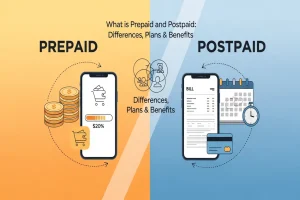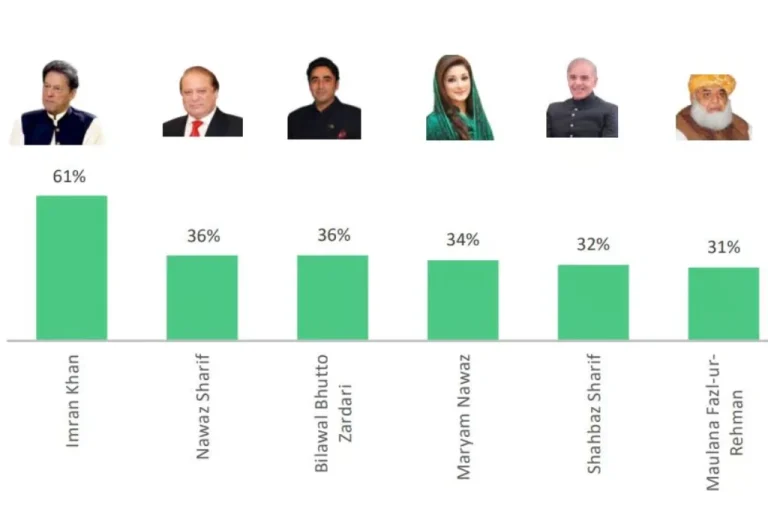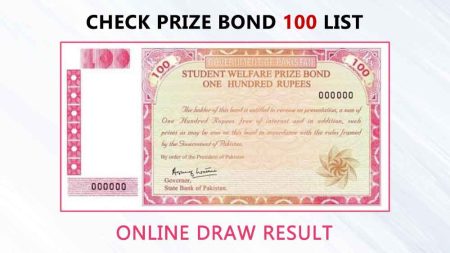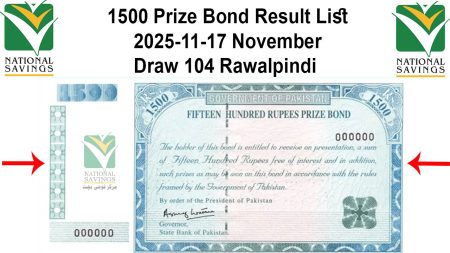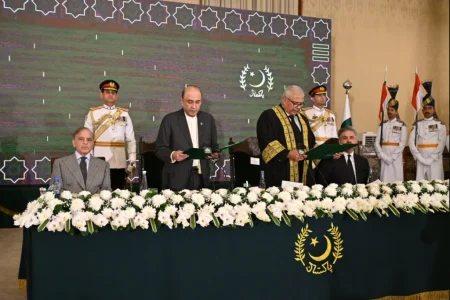Pakistani politics is as active as its people are, and parties make the future of the country with elections, rallies, and buzzes on social media. Popularity ranking as of October 2025 is based on the recent polls, 2024 election vote shares, and the people’s sentiment on sites such as X. The economic misfortunes and political tensions notwithstanding, Pakistan Tehreek-e-Insaf (PTI) is on the frontline, partly due to the support of the youth and the anti-establishment moods. The following is a list of the 5 most popular political parties in Pakistan based on surveys such as Republic Policy July 2025 Lahore poll, and Gallop data.
Pakistan Tehreek-e-Insaf (PTI): The Young Powerhouse
PTI leads the pack with approximately 31 percent national vote share in cut off results in 2024 and an impressive 51 percent in recent Lahore polls. PTI targets urban millennials seeking change as it is led by jailed former PM Imran Khan, whose personal approval is close to 60. Their anti-corruption position and social media acumen, with 93% of new X followers in early 2025, remain dominating, despite crackdowns. The 93 seats that PTI won in the National Assembly (independent) are indicative of its grassroots.
Pakistan Muslim League-Nawaz (PML-N): The Establishment Favorite
PML-N is the second with 24% vote share in 2024, but it has 75 seats of influence in Punjab. It promises infrastructure and economic stability under Nawaz Sharif and brother, Shehbaz Sharif (current PM). According to polls done recently 16% of the support is in key areas, falling below the peaks but remaining steady among middle-class voters. The organizational strength and attractiveness to traditional bases of PML-N is demonstrated by massive rallies such as the 2025 Narowal jalsa held in February.
Pakistan People Party (PPP): Sindh Stalwart
PPP with 19-percent vote share and 54 seats, takes a third position as it controls the rural heartlands of Sindh. The new generation of faces is that of Bilawal Bhutto Zardari with his progressive crowds focusing on social welfare and women rights. National appeal fell after 2024, yet coalition politics of PPP increased its exposure. There is 10-15% stable support in the polls particularly in the south.
Jamiat Ulema-e-Islam Fazli-JUI-F: The Anchor of Religion
JUI-F is in the fourth position with 5% votes and 10 seats, which flourishes in Khyber Pakhtunkhaw and Balochistan. The cleric network led by Maulana Fazlur Rehman mobilizes the conservative voters with Islamic values and anti-US propaganda. Its popularity is highest at religious festivals where it has between 8-10% in polls of faith.
Muttahida Qaumi Movement-Pakistan (MQM-P): The Ethnic City Voice
Bringing the total to 5, MQM-P is nationally earning 2 percent but performing above average in Karachi with 6 seats. It targets urban minorities with its emphasis on the rights of Muhajir and city government. X Sindhi chatter is recording niche loyalty as 5% support in Sindh urban polls.
The Bigger Picture: What Makes Popularity?
The victory of Pakistani politics in 2025 will depend on the hopes of economic recovery (46% are optimistic according to Gallup) and the anger of the youth with the old organizations. The digital advantage of PTI and cult status of Khan overshadows the competition, whereas coalitions such as PML-N-PPP maintain an equilibrium of power.
Popularity in this unstable field does not stand still. These leading parties would dictate the discussion on employment, safety and law to the Pakistani who are looking forward to the next vote.
Read: Latest Politics News


